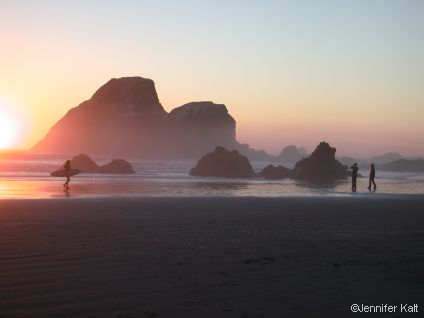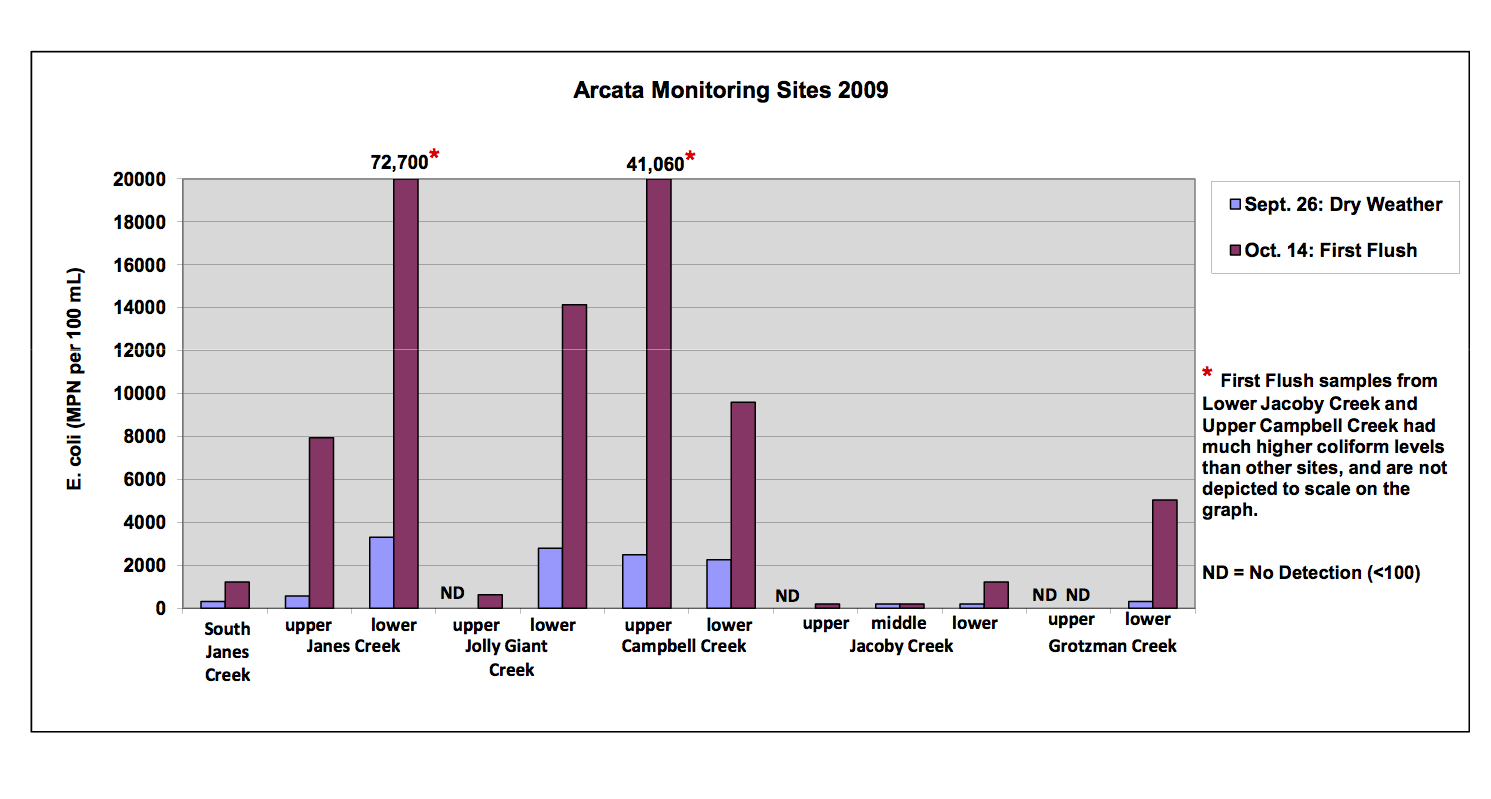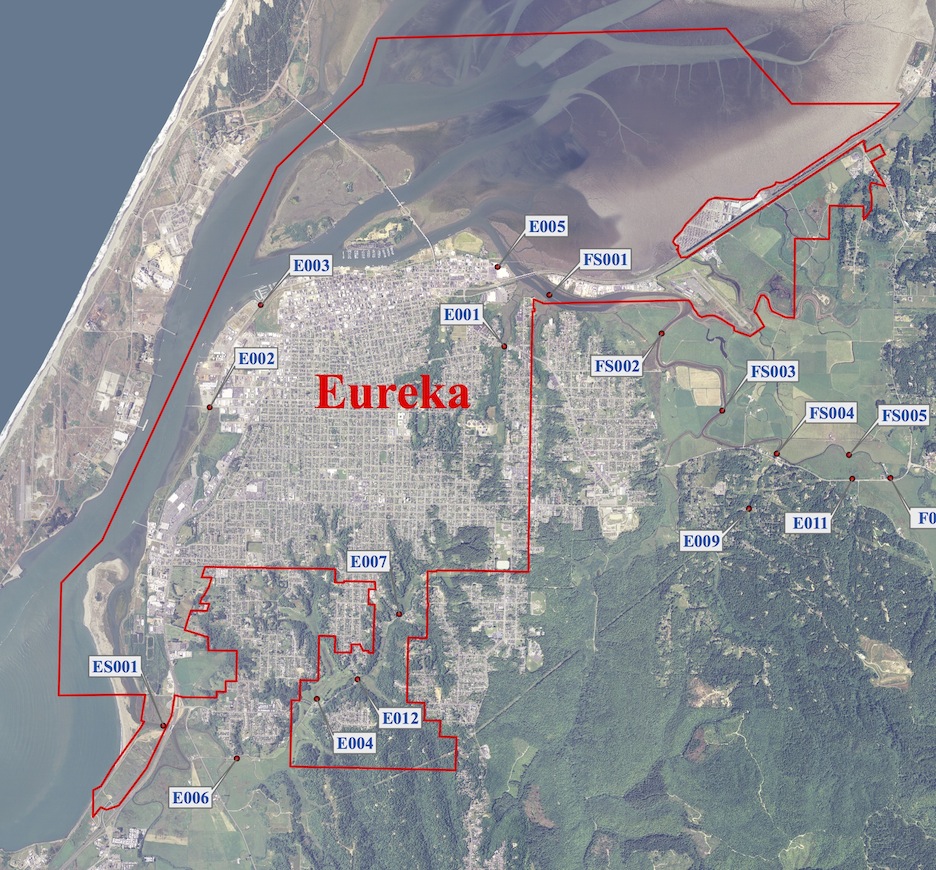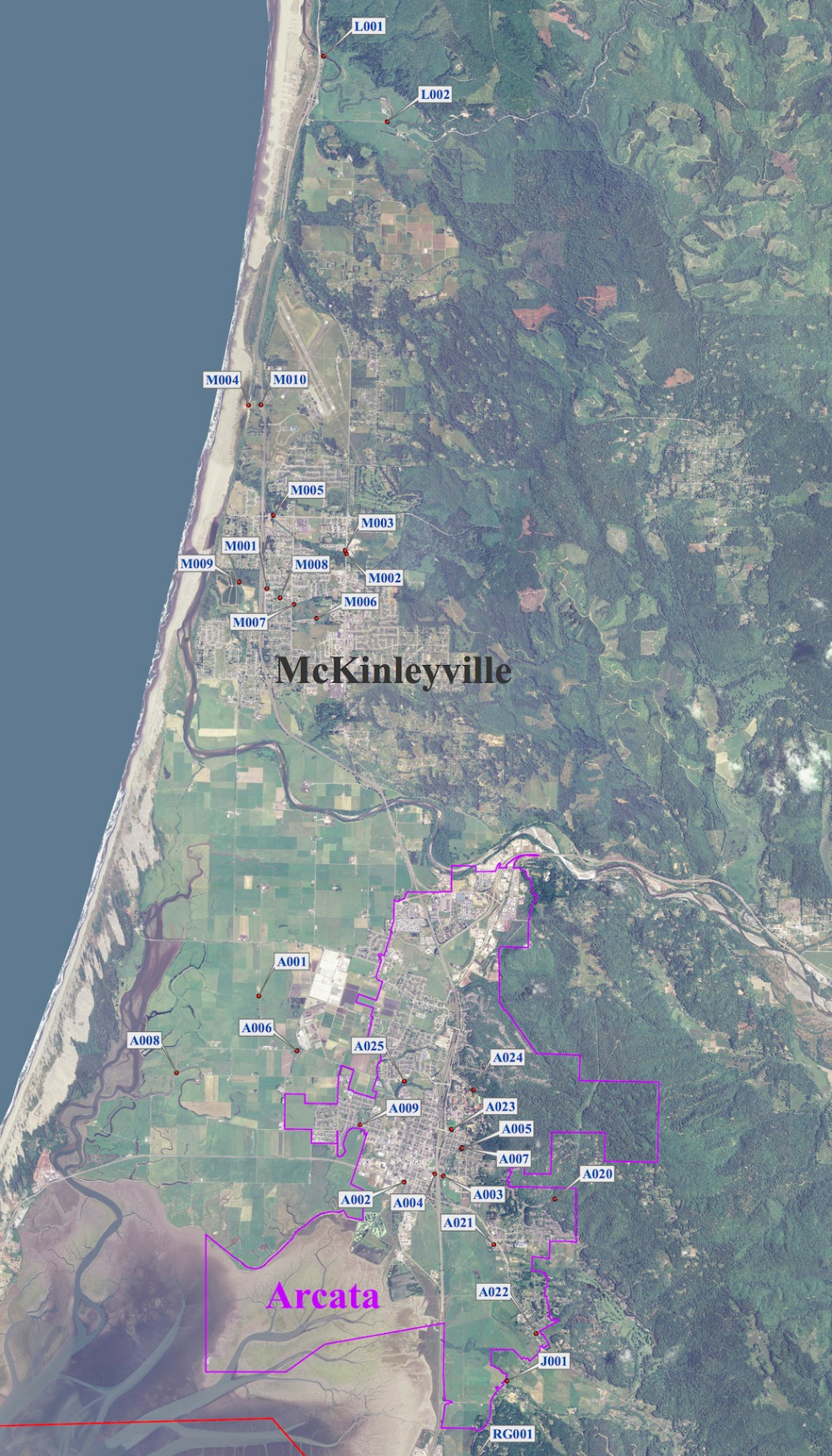On November 28, 2007, a truck headed to service Pacific Lumber’s diesel equipment in Elk River fell off a bridge over Freshwater Creek, spilling approximately 150 gallons of diesel and smaller amounts of motor oil, used oil, lubricants, brake and transmission fluids. The Steve Wills Trucking Company driver and passenger were fortunately uninjured, and emergency responders managed to pump out much of the truck's diesel load before it reached the creek. But the crash raised questions about oil spill response for inland waters on the North Coast.
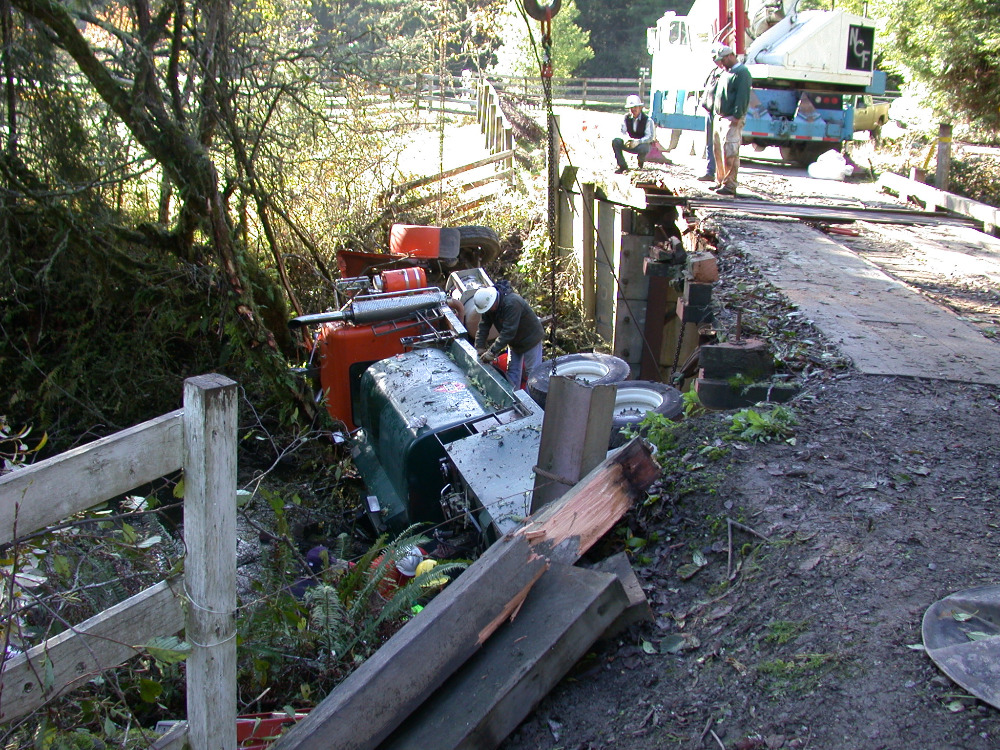
Baykeeper staff and volunteers collected water samples for five days, beginning 15 hours after the spill. Some components of diesel were transported rapidly downstream, while other components evaporated, contributing to the powerful fumes that remained along the creek for days. The heavier components tightly adhered to leaves, rocks, gravel, and eventually to aquatic organisms. These components are of long-term concern to salmonids and other fish, since they accumulate in pools and side channels where fish tend to spend time resting and feeding on aquatic insects.
Thanks to the dedicated water quality volunteers who helped with the sampling efforts, we were able to make a difference.
If you'd like to make a donation to help cover the costs of the sampling, please click here.

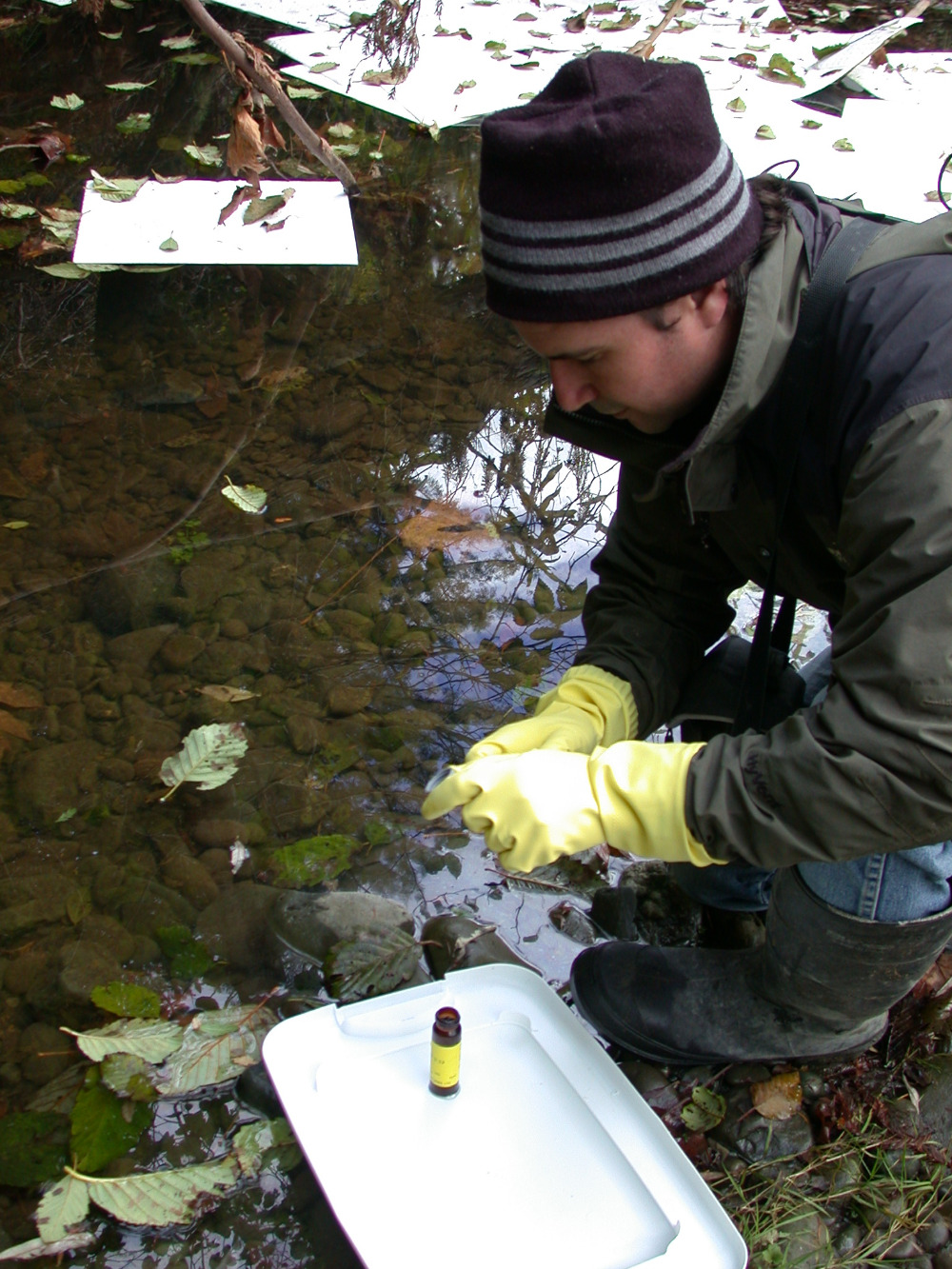
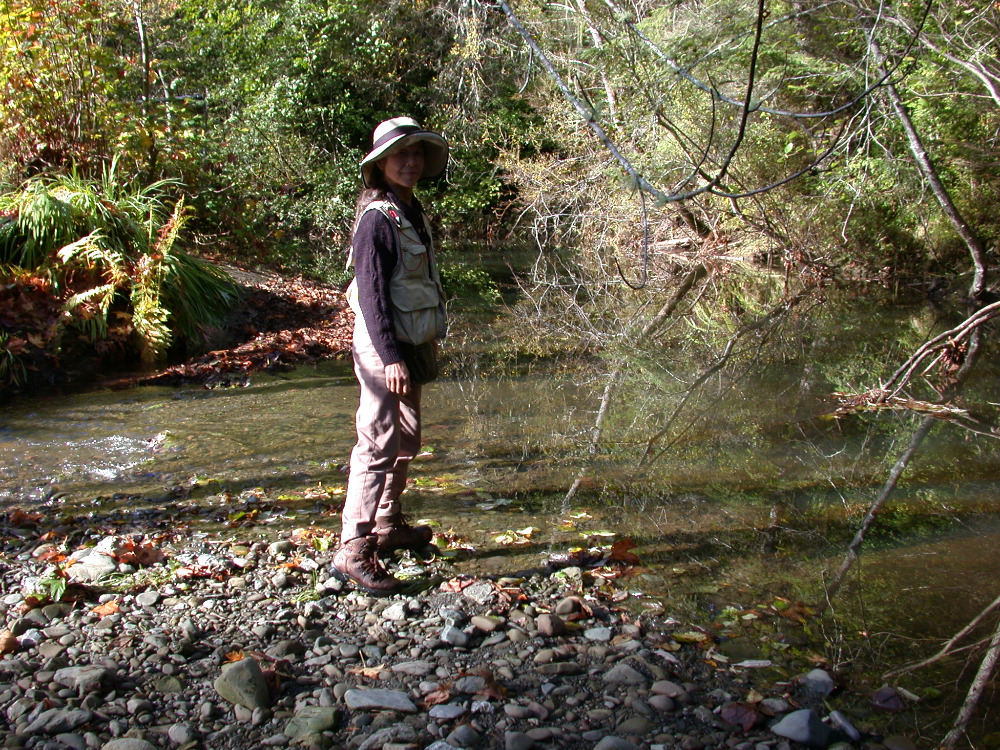
Our results found very high levels of both motor oil and diesel one-half mile downstream the day after the spill, with rapidly-declining levels detected after 2 days. Five days after the spill, no samples contained detectable levels—until a 1” storm arrived that afternoon, washing contaminants downstream from the banks as the creek level rose 1.5 feet.
Petroleum hydrocarbons can have a variety of impacts on aquatic organisms in freshwater ecosystems. Interference with reproduction, feeding behavior, and olfactory senses used for navigation have been documented in salmonids. Aquatic insects such as caddisflies and mayflies—important food sources for fish—are quite sensitive and can suffer from lethal and sublethal affects.
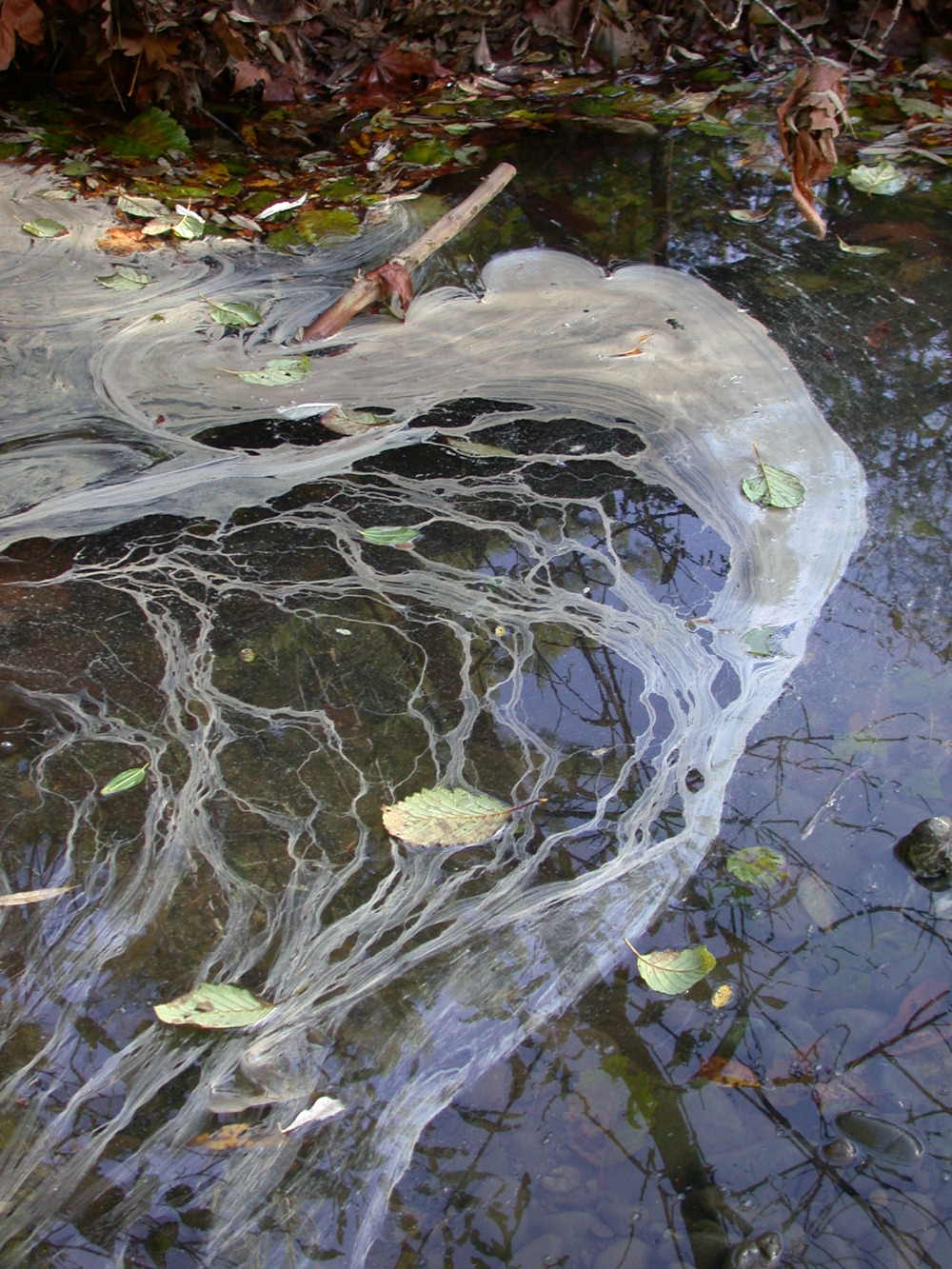
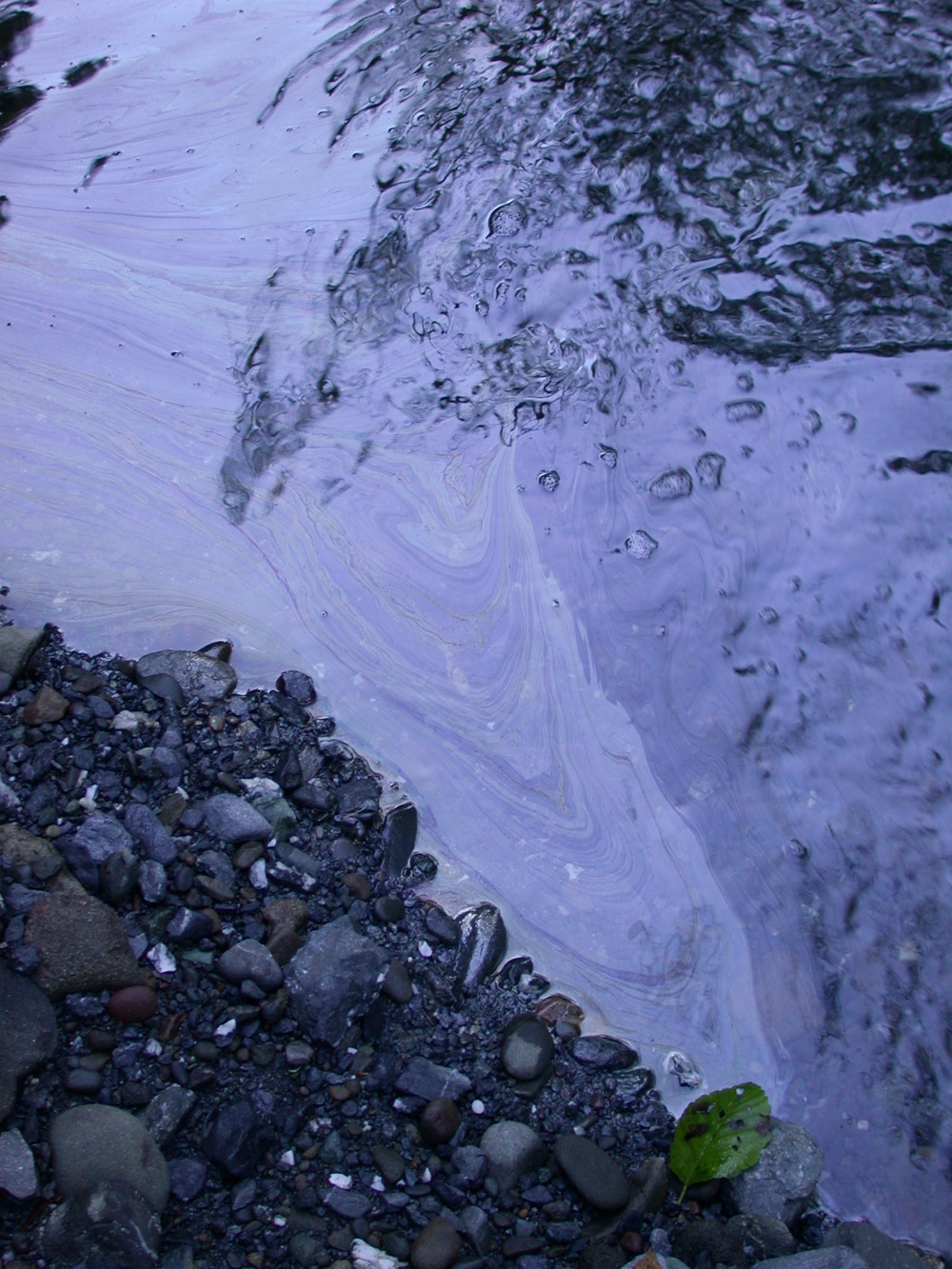
Left: Oil slick in Freshwater Creek on Nov. 29, 0.5 mi. downstream from the accident site.
Right: Oil lingers on the surface of Freshwater Creek on Nov. 30, about 0.7 mi. downstream, on its way to Humboldt Bay.
Although the most high-profile spills tend to be in marine and coastal environments, freshwater spills are actually more common and pose different challenges with regard to cleanup efforts. Cleanup efforts following this spill focused on the floating components of diesel, which were soaked up by absorbent booms and floating pads. The amount of spilled contaminants that adhered to sediment and gravel in the creek bed or escaped downstream into Humboldt Bay is unknown.
Many questions remain. How and why did this accident happen? Was it related to inadequate bridge maintenance, and if so, how many other similar bridges are at risk? What agency is responsible for taking the lead on responding to such spills? How could cleanup efforts and response times be improved for future spills? Humboldt Baykeeper would like to see a local Task Force established to plan for future spills.
For more info, go to http://www.waterboards.ca.gov/northcoast/water_issues/hot_topics/freshwater_creek_spill/pdf/07_0106_MRP_SteveWills_spill113007.pdf.
